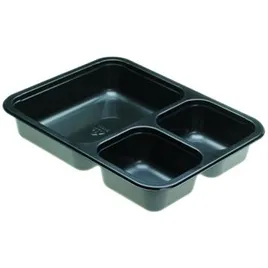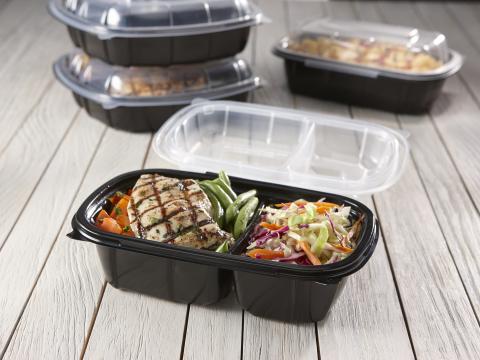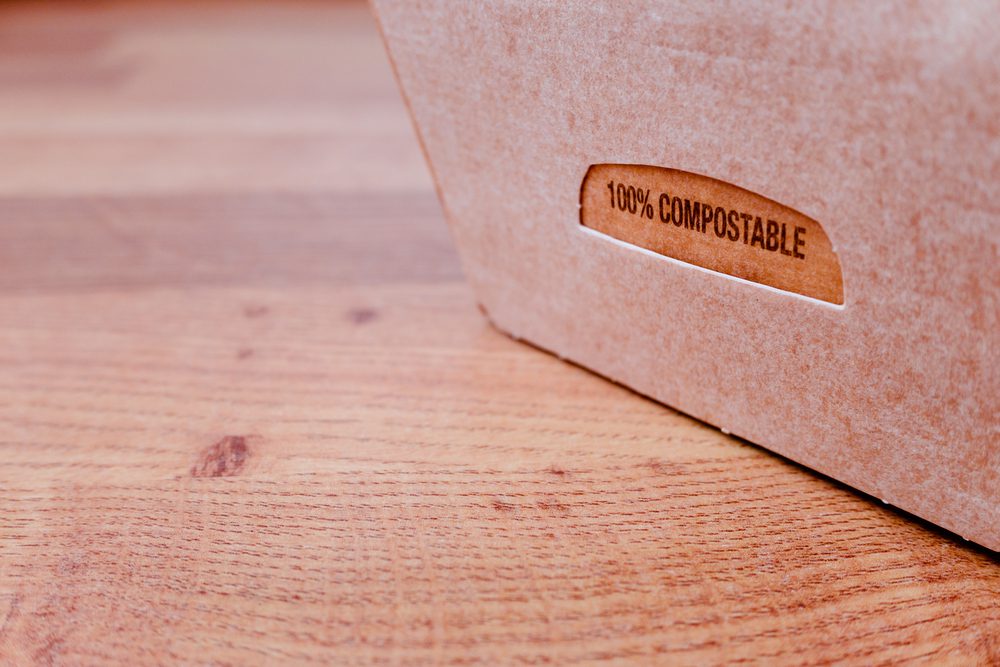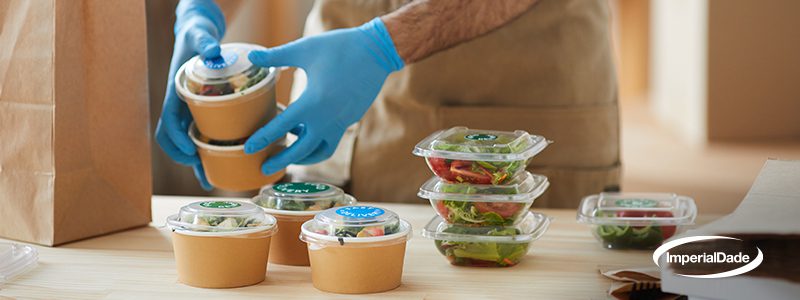You may not have thought too much about it before, but with an increase in demand for takeout and new government regulations, selecting the right to-go packaging is vital.
There are so many different options for takeout packaging today and it can be hard to feel like you’re picking the “right” one for your customers.
The best takeout packaging for your business depends on your business’ and customer needs.
Is sustainability really important to you? Do you serve hot or cold food? Is most of your takeout through delivery apps?
These are just some questions you should ask yourself before deciding on a takeout container.
In this article, we’ll cover some of the most important factors to consider when deciding on your business’ food packaging priorities.
Considerations When Selecting the Best Takeout Packaging
For most businesses, the right takeout packaging will have a combination of effective temperature control, little heat transfer, good ventilation, leak resistance, options for branding, and cost-effectiveness.
However, most to-go container options are not inclusive of all the above qualities.
For example, a sealed container may seem like a good idea for leak prevention, but steamy, hot foods will become soggy as the steam is trapped. Vented lids prevent this problem, but then you’re sacrificing some of the container’s temperature control. That’s why it’s important to decide what factors are most important to your business.
By prioritizing certain food packaging features, you’re able to focus on finding a container that is able to accommodate as many of your business needs as possible.
Local Legislation
Before going any further, it is first important to understand the local laws and regulations regarding different food packaging materials.
For example, some areas of the United States have banned styrofoam while others have outlawed certain plastics. Regulations can also differ by municipality.
Understanding what substrates are not allowed in your area is the first step to selecting a container becasie you don’t want to find the “perfect fit” but then in the end the container material type is banned in your area.
Temperature Control
Good temperature control is possibly one of the most important features to keep in mind when picking a food packaging solution.
You want a container that is going to keep hot food hot, and cold food cold.
Polypropylene (PP) plastic containers are good at preserving food temperatures, whether it be hot or cold. But, you also need to consider how the material handles extreme heat or cold as it would have in the microwave or freezer.
PP plastic, for example, is a microwave-safe container material.

While some plastic can only be used in the microwave, it is not suitable for the oven.
If you expect your customers to reheat or freeze food products after leaving your facility or getting delivery, then make sure to check that they’re served in an oven-safe container, microwave-safe container, and/or freezer-safe container.
Leak-Proof Design
If you serve greasy or oily food, this feature is essential.
An example of a leak-proof design is any container that can be sealed. Whether it be with a clamp or a screw-top, these containers prevent your customers from dealing with any messy cleanup that might occur from a leak.
Vented Design
Containers with vented lids are ideal for hot and steamy food products.
By allowing steam to escape the package in an effective manner, you can prevent the food from becoming soggy.
Vented lids are typical of clamshell containers, though you can see vents on many other designs as well.

Compartmented Design
Do you have a wide selection of food products? This feature will be crucial for your business.
Compartmented food containers are usually divided into two or three interior compartments.
The primary purpose of using a compartmented design is to keep food separate. That means you can store an entree and side in the same container without worrying that they’ll mix.
This feature is particularly handy for keeping foods with differing textures apart, like soup and bread.
Tamper-Evident Food Packaging
Tamper-evident packaging has become a staple of post-pandemic life.

As the name implies, tamper-evident packaging is meant to prevent someone from tampering with your food container. If the container is opened, then evidence will be left behind.
It’s a great safety measure for businesses that rely heavily on takeout and delivery services.
One example of a tamper-evident design feature is a tear strip. Tear strips are usually found on clamshell containers, holding the top and bottom of the container closed with a strip of plastic or paper.
In order to open the container, the strip has to be torn off, making it obvious to a customer that the container had already been opened.
Another example may be a sticker seal. The sticker is placed along the outer edge of the container and when opened, the seal tear indicating the package has been opened.
Eco-Friendly Food Packaging
Whether it be because of the growing public concern over sustainability, or the ever-growing number of laws prohibiting PFAS, you may want to consider eco-friendly food packaging.

There are plenty of options to choose from if you’re looking to go green. Two ways to approach eco-friendly food packaging are by looking at the impact of its production and looking at the impact of how it’s disposed of.
Sustainable production could mean that the process of producing a container is carbon-neutral, or that the materials being used for the container come from a natural, renewable source. Bagasse is an example of a renewable material that can also be produced carbon-neutral.
On the other hand, sustainable disposal could mean using a container that is recyclable, biodegradable, compostable, or a combination of the three. Bagasse, for example, is both compostable and biodegradable, while material like aluminum is neither, but it can be recycled many times before deteriorating.
Cost-Effective Packaging
Next up, is cost. How much do you want to spend on take-out packaging? For some, the cost is not a factor. For others, the least expensive solution is the best option.
Material type, difficulty of production, and transportation are all factors to consider when thinking of cost.
There’s no right answer when it comes to which food packaging solution should you invest in. While the container that has all your desired features may be out there, it may not be affordable for your business to use.
Pick which features are essential to your food service operation, and which are affordable, and go from there.
Branding & Visuals
Finally, consider how the look of your food packaging container reflects on your business.

Cornstarch food packaging, for example, typically comes in shades of white and brown. It has a specific, slightly textured, look that makes it immediately recognizable as sustainable. That recognition extends to your business.
A clear material, like PET plastic, has its own set of benefits. Chief among them is how the container can be used to display the food within it. In this case, you’re not creating brand awareness, rather you’re using the food packaging to tempt customers into purchasing a certain food product.
Alternatively, you can go with a material like polypropylene for an opaque or solid-colored design. This way, the material itself doesn’t provide the visuals, rather it leaves room for you to add branding and advertising to the package.
Final Thoughts
There’s a lot to consider when it comes to identifying the best takeout packaging for your business and we understand it can be a difficult decision.
When deciding which features are important to you, keep in mind what your goals are as a business. Are you worried about delivery drivers tampering with food? Is going green really important to you?
If you’re still having a tough time with the decision, consider reaching out to an Imperial Dade facility near you. You can set up a free consultation with one of our food service experts today, over the phone, or on our website.
Our experienced salesforce force knows the regulations and pricing for items based on your location.
We’ll evaluate your food service operation in order to help understand your goals so that we can provide you with actionable feedback on how to move forward in picking the best takeout packaging solution for your business.
Check Out These Related Articles:
- Sustainable Food Packaging: Top Trends in Foodservice
- Oven-Safe Disposable Food Containers 101: What Containers Can Be Used in the Oven?
- Microwave Safe Containers: A Business’ Guide [VIDEO]
- Best Take Out Packaging For Third Party Delivery
- Biodegradable vs Compostable Food Packaging: What’s The Difference? The Best Alternatives To Single-Use Plastic Bags For Your Business
- Eco-Friendly Take Out Containers: What’s the Best, Low Cost Option For Your Business
- Commercial Composting vs. Home Composting: What’s the Difference?
- Which Common Food Packaging Products are Recyclable: A Business’ Guide
